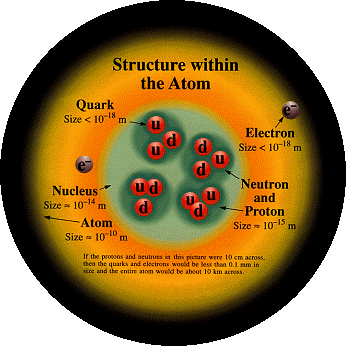 Atomic and Nuclear
Physics
Atomic and Nuclear
PhysicsPhysics (3,4) Course Outline
Astrophysics and Cosmology
The enduring questions in "Big Physics" revolve around the heavens - from "what exactly is out there?" to "what mechanisms are behind the workings of the Cosmos?". Sir Isaac Newton rejected a pastor's life to study planetary motion and in so doing came up with the equations that we use to describe most of the more mundane motions seen in the world around us.
But it it was the peculiar motion of the planets that fueled Newton to study what we now term 'kinematics': the laws of motion that we use to describe moving objects. We will start with Newton's work and follow the course of Newtonian Physics from 17th century Cambridge (the one in England, not Massachusetts) through to the theories of the Big Bang, Black Holes, and Beyond.
Quantum Mechanics and Relativity
The 20th Century started with a growing realization that the physics that people thought was almost complete was, in fact, woefully inadequate to describe many of the observations that leading scientists of the day were seeing. The 19th Century had closed with a sense of triumph - Britain lead the world in technological achievement: Victorian engineering marvels powered the world with a dazzling mix of immense steel construction, coal powered boiler houses and dirt poor children thriving on a diet of factory labor, orphan house gruel and choking black smoke. James Clark Maxwell's studies of electricity and magnetism had almost everyone convinced that we we were within a few years of closing the book on Physics, as everything that could be discovered already had been discovered.
Many experiments conducted at the beginning of the 20th Century, however, all pointed to the overwhelming conclusion that at the very small scale "Classical Models" were wrong. In other words, the Physics that things we see is no good at describing the things that we can't see. Amongst many, many others Erwin Schrodinger, Max Planck, Linus Pauli, Werner Hiesenberg and (of course) Albert Einstein were all instrumental in formulating the theory of "The Quanta". Einstein went on to describe how we perceive the motion of very fast objects and we shall also study special and general relativity. These modifications we can apply to Newton's theories and we will study how these ideas help us better describe planetary motion and how they tie in to the latest ideas in Cosmology.
 Atomic and Nuclear
Physics
Atomic and Nuclear
Physics

Coming soon to a Semester 2 near you